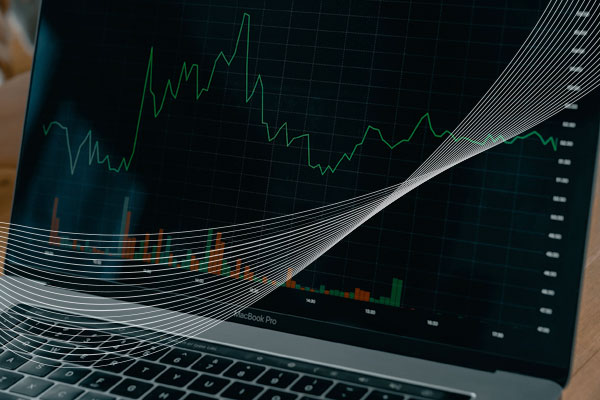Zilliant experts examine the macroeconomic and technology trends impacting the electrical products distribution industry in 2022 and beyond.
Taking a snapshot of the electrical product distribution industry: a roundtable discussion
Our previous roundtable looked at the macroeconomic and technology trends impacting the auto parts distribution industry, but now we’ll turn our attention to electrical products distribution. This time, our panel of insiders digs into the details of what electrical product distributors should do in the short- and long-term to overcome still-prevalent manual processes, supply chain disruption and inflation, and even the great resignation.
Read on to learn how Zilliant Director of Business Solutions Consulting Vishal Asatkar and Zilliant Senior Director of Solutions Consulting Jay Foulkrod see the industry in early 2022.
Electrical distribution as a sector saw record growth in 2021 in construction, industrial, institutional, and utility verticals. Boom times can hide insidious pricing pains, however. What should distributors do to discover and correct areas of margin leakage?
Vishal Asatkar (VA): If we just take a quick step back in terms of how pricing typically happens in electrical distribution, then what we see generally is there are three kinds of pricing.
There's matrix pricing where essentially manufacturers and suppliers are providing your products at certain costs, and then you have a mark-up on top of that. That's the matrix, and that's one way to price. Another way is to have agreements with some customers, and your pricing follows those agreements. Then finally, there's typically a pretty significant chunk where you're doing overrides. So, something that you get at the spur of the moment, and you're pricing using your gut instinct and so forth.
So, that's the contextual backdrop. In current times, inflation and costs increasing is a big margin leakage area. If increasing costs is a challenge, the availability and lack of availability of certain products and items presents a unique opportunity for you to service or decide which demand stream you want to service. If you're more judicious about maybe not responding to the cherry picker or the very transactional customer, you can instead provide the product or chase the demand, which is more of a value on customers. That's a good way to go after higher margin business or high margin demand if you will. So, those two things come to mind right away.
Jay Foulkrod (JF): I'm thinking about what's been driving growth and what the risks are. My sense would be the upside of the product availability issues is you can command more price and margin, right? Because of that supply constraint, you can drive your price more. So, there's obviously a risk that as the supply chain opens back up and you get product back in stock, all the margin gains you made could be eroded.
My sense would also be that low interest rates have probably driven construction. So, as interest rates rise, what does that do to the construction market? As I think about how electrical distributors can be well positioned for that, it's really understanding the willingness to pay for your different customer segments and allocating price and volume appropriately. So that if you start to face headwinds, you know that you're getting the most you can from the different parts of your market. Certainly, there are AI-enabled data science solutions to help you be more precise and targeted in terms of understanding what you can get and where. So, thinking about how to better segment and better target your market is always a good way to make sure you're weathering the different trends that are happening.
How prevalent is manual pricing or cost management in the electrical products distribution industry? Additionally, what's the downside and impact of that?
JF: I have seen some of both. I've seen some distributors that are fairly advanced in terms of their tool set, and others that are pretty manual. So, if you're stuck in manual processes, you're more likely to miss stale prices in your system because it's hard to figure out what is in there and what you need to do about it. You're more likely to be responding slowly to the changes in the market, and so in that period of time - from when a cost or competitive change starts to happen to the time that you can actually respond to it - you might be losing opportunity or losing business because of it.
Certainly, having better, more automated, and smarter processes is critical. We want to be faster and smarter, to the point that I made earlier, where you can be more targeted and quicker about making the change. That is always going to give you the best chance to compete and win.
VA: I would say in my experience there are always exceptions, but typically distributors are very cost conscious. So, they're not leaders or early adopters of technologies. There is a good cross-section of the distributors that I talk to who are still using legacy tools or relying on the human back-office staff to take care of things. It also depends a lot on the size of the operation as well. They might be relying more on back-office teams and homegrown tools to do a lot of the day-to-day tasks, which are price administration or, as we were talking just before, cost pass-through.
The primary challenge is the turnaround time it takes on any of these events. The rate of change has become much higher now. The ability to be nimble and more reactive, or be able to take proactive actions, is something that any distributor would benefit from because of the scale at which they are having to deal with change. By that, I mean the number of parts or how frequently they are purchased and so forth. To the extent that you've outgrown some of these manual processes or your homegrown tools, then it can severely hamper your ability to react quickly to these events that are happening in the marketplace.
Prior to pandemic-driven inflation and supply chain disruption, the rise of digital commerce was probably the biggest threat to the industry (Amazon effect, etc.). Have the last two years forced electrical product distributors to digitally transform? What are some examples you’ve seen?
JF: We're certainly seeing a trend of that. There’s pressure to become more digital and digitized to be able to respond to customers who want a frictionless transaction through a predefined catalog or through a digital channel rather than having to call and talk to someone. It's not just the ordering, but in the electrical space, there's a competitive differentiator for someone who can place an order, show up on site, and all your product is sitting right there waiting for you. Rather than having to go to the dealer and wait at the counter for someone to bring all the stuff up. Time is money if you are an electrician. So, being able to respond more nimbly digitally, and get product on location faster is certainly valued by the end customers electrical distributors are serving. So yes, there is pressure to continue to improve. We see companies trying to move in that direction.
VA: I don't know if I've seen it being adopted quickly that broadly. In my view, these are still tradespeople and contractors, and to the extent that some of them are veterans of the field, that are probably not early adopters of placing orders entirely online. They're still traditional. In my mind, I think the biggest competitor is still the traditional distributor versus some of the market disruptors like an online-only provider or service.
JF: I think I'd agree with that Vishal, and I think maybe another way of saying that is the contractor market is still relationship-driven. It's still a relationship sale. So, contractors want to deal with suppliers that they trust. They want to be able to get someone on the phone when they want. That's certainly still true. My sense is the push to be more digital, and the threat of Amazon, will probably end up being a good thing for everyone. That we had this push through a big disruptor causing us to re-examine the way we do things and find ways to be more efficient, more friendly, more versatile to all the types of customers and buyers that we have. A little bit of a disruption is a good thing for a market and for an industry. It forces innovation and improvement.
Electrical distributors have not been spared by the Great Resignation and workers aging out of the workforce. What can be done to build a more efficient sales team?
VA: There's good and bad, right? Obviously, it's a mixed bag. If you have some of your veterans leaving, what you're losing is a lot of knowledge and wisdom coming from the gut or experience. I’ve also heard it’s challenging to attract newer salespeople if your tools are legacy or your business processes are still in the dark ages. So, it can be a frustrating experience for a new hire if their mindset is different. Even if you're doing an industry-lateral hire, and they're used to better practices or better tools available in the workplace. They might find it a big step backwards or regressive to return to legacy tools or manual tools.
JF: There is an opportunity that comes with that too, though. If a company does successfully instill the discipline and the systems to have more structure organizationally about what makes sense to sell and at what price, the potential upside of that is, while you may be losing institutional knowledge with your more experienced sales team, you may also be losing bad habits.
VA: I think you can extend the same point beyond just the sales team as well. I think about people in operations. I had mentioned overreliance on back-office resources earlier. You can imagine somebody in the back office being with you for twenty years, thirty years, which is not uncommon. Now, they're going to be leaving and everything related to pricing in your branch operations was in this person's head. Now, they're leaving. So, you can imagine how hard it is to transition to a new hire when those business processes are not institutionalized in a system or in a tool. It's all in spreadsheets that somebody must teach a new hire. So, if you look outside sales and look at people in operations or back-office functions, then you can see that this problem exacerbates itself. Then it becomes even more of a challenge.
How reliant are these distributors on older ERP systems to calculate and update prices? Can you speak to any examples of how ERP systems of record have hampered digital and dynamic pricing efforts?
VA: Even the smallest of operations do have an ERP system in place. With the newer ERPs, one of the things they lack is an analytical model or support built in. So, I would say whether you’re using an old ERP or a newer ERP, it's not typically helping you determine what the right price ought to be. Yes, there can be limitations on how you maintain and administer the prices, so that can be a difference if you have an older ERP system. Typically, I see back-office staff doing certain things in Excel or outside the system, and then using those to upload or update the pricing data in the ERP. Again, it’s a heavy reliance on manual steps and processes to make the updates as well as upload to or download from the ERP. You can see how that process is a little fragile or has places where it can break down. Newer ERP systems have better automated interfaces that are obviously going to help with that.
There is a general trend amongst IT organizations to have some of these systems be a little “dumb” in certain respects. Then they have an API-first philosophy that goes hand in hand with that. So, what that means is instead of my ERP being the start and end of everything related to pricing and pricing data, what you might do is rely on a dedicated pricing engine or service. You're going there for the price because not a lot of that logic is in the ERP system itself. Historically, that wouldn't have been the case, but now you're trying to take all that complexity out and just put it in an external service to make it easier on you.
So, that's another trend I see happening across almost all enterprises. But again distribution is lagging in that trend. If you're on an older ERP system, it's less likely that you can adopt this kind of an approach or design. You're more likely to be pushing pricing data in the ERP system, and then doing your quoting and invoicing out of there.
JF: Yeah, Vishal, to add your point, to have the ERP be dumb and have a best-in-breed engine for handling that pricing, it also becomes critical as you try to implement more of a digital and an eCommerce strategy. You need to be able to serve up prices to many different places, and often an ERP can't handle it. Often, the ERP itself is structured in such a way that simply managing the price is hard, and it can be less granular or targeted than it should be. So, there are several reasons to think about what might be offered with a best-in-breed purpose-built solution, just for price.
Finally, is there any other advice you would give to these distributors on how they can be proactive about pricing and mitigate financial impact in 2022 and beyond?
JF: Know your customer well - what they need and what they value. It's important all the time but especially in seasons of fluctuation and uncertainty. You need to know what the total offer needs to look like for a customer. What's the blend of products they need? What do they value? And then position pricing appropriately. There is technology that can help with that. If you do that well, you're in the best position to succeed in the peaks and troughs.
VA: I doubt that many distributors would take any major steps just to deal with one of the current hot issues or major things that are going on. It makes more sense to generally align with a long-term move towards better tools. The major thing for electric distribution is that there is a lot of markup-over-cost pricing. There are also pricing agreements where you are going back to the supplier or the manufacturer to get special pricing to support your bid on a project. These are commonalities when dealing with product rationalization or product taxonomy issues. None of this is glamorous or exciting in the sense that it is in today's headline. But if you can address these things, you can get to a more strategic way of pricing so that you're able to execute more quickly from a business standpoint. That's really what's going to put you in the right place to deal with today's issues and whatever issues come up tomorrow. Taking that long view to have better tools and better processes which aren't entirely reliant on humans or are very constrained, is key.



